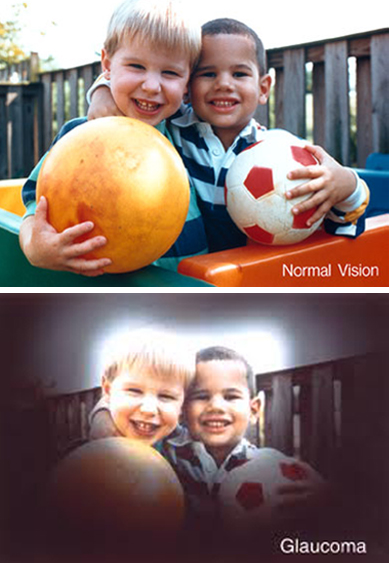 January is Glaucoma Awareness Month and the perfect time to raise awareness for this disease. Early on there are no symptoms. In fact, half of the people with glaucoma don’t even know they have it. Learn about glaucoma and the steps you can take to reduce your risk of vision loss.
January is Glaucoma Awareness Month and the perfect time to raise awareness for this disease. Early on there are no symptoms. In fact, half of the people with glaucoma don’t even know they have it. Learn about glaucoma and the steps you can take to reduce your risk of vision loss.
There are several types of glaucoma, although the most common type of glaucoma is Primary Open-Angle Glaucoma, it begins at the peripheral working inward to weaken the central vision, this could lead to tunnel vision. It can cause irreversible and gradual damage of the optic nerve and vision.
You can prevent glaucoma with regular eye exams (with a visual field test) by an eye care professional and also by looking out for these subtle warning signs:
- Eye Pain
- Night Halos
- Tunnel Vision
- Blurred Vision
- Eye Swelling and Redness
- Nausea
- Sudden Visual Disturbance
- Severe Headache
Are you at risk?
Anyone can get glaucoma, but certain groups are at higher risk. These groups include African Americans over the age of 40, all people over the age of 60, and since it is hereditary, people with a family history of glaucoma, and people who have diabetes.
There are many steps you can take to help protect your eyes and lower your risk of vision loss from glaucoma.
- If you are in a high-risk group, get a comprehensive dilated eye exam to catch glaucoma early and start treatment. Prescription eye drops can stop glaucoma from progressing.
- Even if you are not in a high-risk group, getting a comprehensive dilated eye exam by the age of 40 can help catch glaucoma and other eye diseases early.
- Open-angle glaucoma does not have symptoms and is hereditary, so talk to your family members about their vision health to help protect your eyes and theirs.
- Maintaining a healthy weight, controlling your blood pressure, being physically active and avoiding smoking will help you avoid vision loss from glaucoma.
Stay aware of the risks and symptoms and remember an annual comprehensive eye exam is key for early detection of glaucoma and other eye diseases.
Click here to learn more about Glaucoma.

